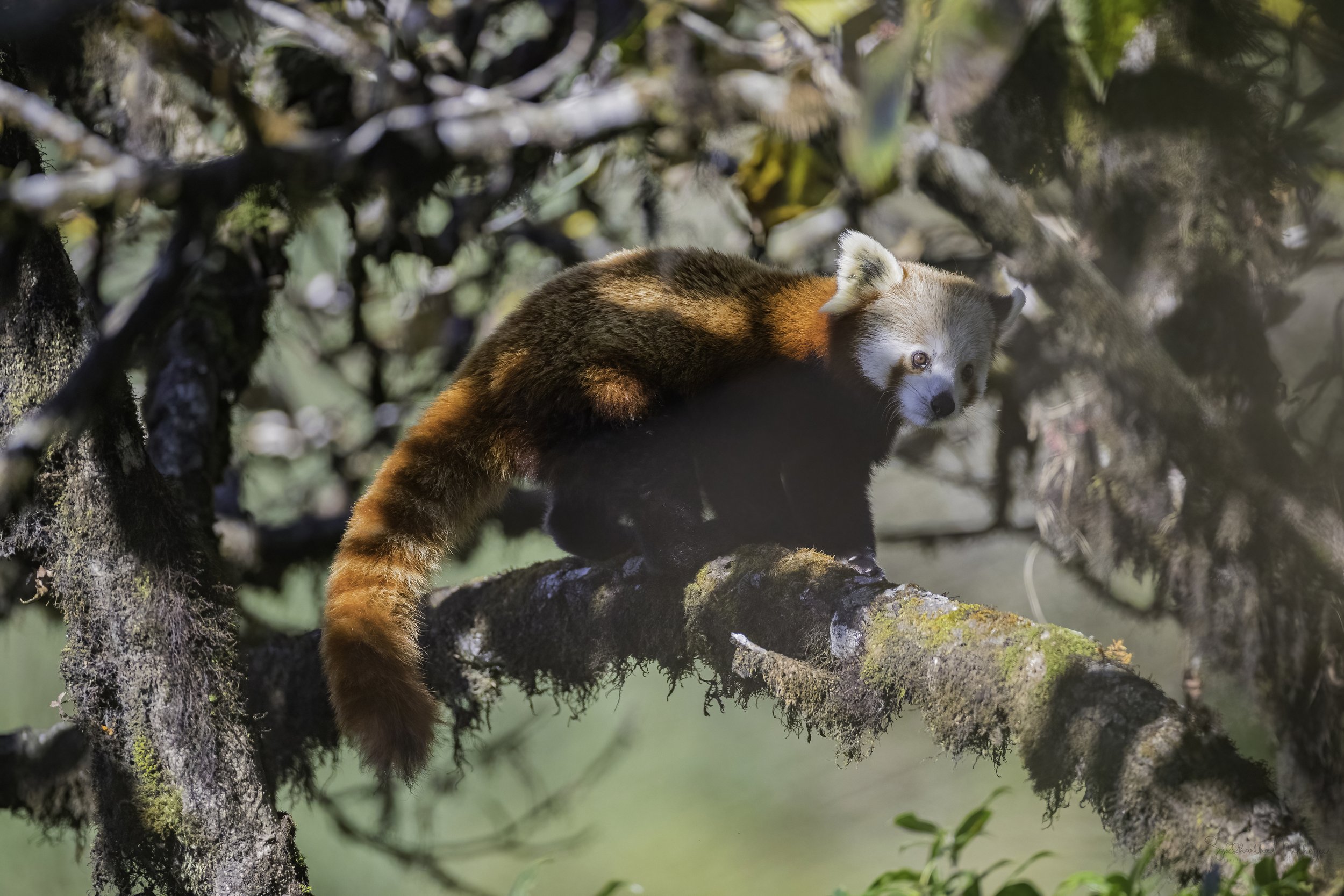Explore Wild India is a nation wide monthly magazine, founded by Devesh Kumar in 2018 and recognised by the Government of India under RNI. It is presented by the WIF India Society Group all over India. Since 2015, WIF India has been Asia’s Best Portal for nature and wildlife, and a platform for over 3500 nature and wildlife photographers to showcase their work, from India & across the world.
Featured on the February 2023 issue as the cover feature was one of the Red Panda’s I photographed in the Singalila National Park in November 2021. The accompanying article - on page 24 of the magazine - is also shared below.
The ebook version is available for download.
Photographed: November 11, 2021 | Published: February, 2023.
Red Panda
Singalila National Park
The jungles to the north and east of India are treasure houses to some of the most precious and strange flora and fauna. One such treasure in the east is Singalila National Park in West Bengal. Established in 1986, the park is among the few remaining habitats of the endangered and elusive Red Panda. Located on the Singalila Ridge at an altitude of more than 7000 feet above sea level, in the Darjeeling district of West Bengal, it is a well known trekking route to Sandakphu - the 3636 m; 11,930 ft mountain peak on the border between India and Nepal. On a clear day, four of the five highest peaks in the world, Everest, Kangchenjunga, Lhotse and Makalu can be seen from its summit.
Thick bamboo, oak, magnolia and rhododendron forest between 2000 and 3600 m cover the Singalila Ridge. There are two seasons of wildflower bloom - one in spring (March and April) when the rhododendrons bloom, and another in the post-monsoon season (around October), when the lower forests bloom with many floral species and orchids.
This is the backdrop to my tryst with the elusive Red Pandas in early November. We had the expert guidance of trackers from the Firefox Expeditions India team led by Sourav Mondal & Amardeep Thami. They are well versed with the nuances of the animal and intimately aware of the risks and dangers it faces. It is evident that they care deeply for these forests and the wildlife it harbours and take all measures necessary to keep it safe and clean. For them the animal comes first! The whole team have been doing this for a number of years now and the fruits of their labours are evident as you breathlessly trek up and down the rather steep mountains with them.
We got news of the pandas on a foggy November morning a kilometre or so from Kaiakata, Ilam - a rest point on the Tinchule-Singalila trekking route. The animal was in the canopy along the ridge facing Nepal enroute to the sacred Kalipokhri Lake. It was a pretty rough trek up and down rather steep inclines, through dense bamboo before we, thoroughly out of breath, got to a ledge where we could, very precariously, position a large portion of our body along the mountain side and document the Panda as it made its way through the canopy - almost at eye level. The gentle morning sunlight, diffused furthermore by the fog, filtered through the leaves and gave me this RED PANDA - WILDART.WORKS 1 one moment when the panda turned in my direction and I had my catchlight. After all, eyes are the most telling feature of any being and reveal so much to the viewer.
This photo is but one tiny glimpse into the experience I had with this spectacular animal in its natural habitat over the few days we were there. We had the good fortune to spot multiple pandas over the few days we spent at the Singalila National Park at various times of the day with different conditions prevailing. Sometimes the sun was gentle and obliging, sometimes harsh, sometimes there was fog and sometimes just too much foliage but all in all it was an amazing time and we were blessed with some intimate moments with the elusive & endangered pandas.
Find me and more such intimate encounters on my website and blog.
Download the E-book version of the February 2023 edition.


